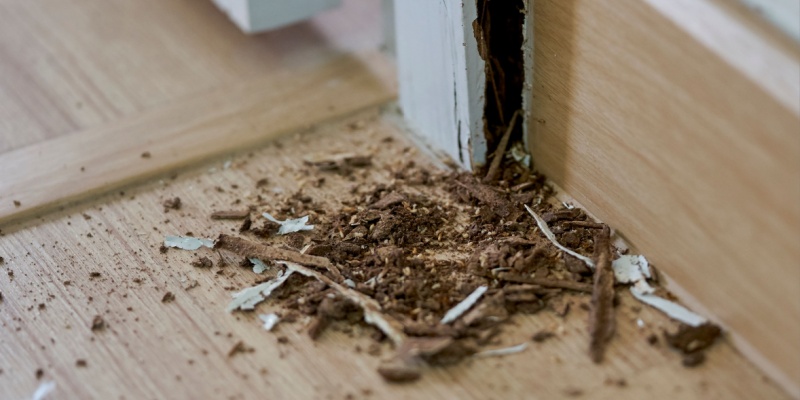Termites are sneaky pests that often work undetected, silently feeding on the wooden structures of your home. By the time you notice their presence, the damage may already be extensive. Knowing how to spot early signs of termite damage can help you prevent costly repairs and maintain a safe living environment. Here’s what to look for and when to call in professional help.
1. Wood That Sounds Hollow
Termites tunnel through wood from the inside out, leaving the outer layer intact. This creates a hollow sound when you tap on a wooden surface. Check door frames, window sills, baseboards, and exposed beams. If you hear a hollow echo, it’s worth investigating further.
2. Cracked or Bubbling Paint
As termites damage the wood beneath, the surface can start to show signs of distress. Cracked or bubbling paint may indicate moisture buildup due to termite activity. While paint issues can also stem from other problems like leaks, it’s essential not to dismiss these signs too quickly.
3. Mud Tubes Along Foundations or Walls
Subterranean termites build mud tubes to travel between their colony and a food source. These tubes protect them from predators and maintain a moist environment. Look for thin, clay-like tunnels along your home’s foundation, crawl spaces, or interior walls. If you find any, gently break a section to see if termites are active. If the tube is repaired within a few days, termites are likely still present.
4. Discarded Wings
Termite swarmers (winged termites) leave their colonies to find new nesting spots. Once they mate, they shed their wings. Finding discarded wings near windows, doors, or light sources is a red flag. Although a single wing doesn’t guarantee an infestation, multiple wings suggest termite activity.
5. Buckling Floors or Warped Wood
As termites feed on wooden supports, floors and walls may become weakened, leading to structural changes. A sagging floor, warped window frame, or a door that no longer fits its frame can signal termite damage. Pay attention to any unusual changes in how doors and windows open and close.
6. Small Piles of Frass (Droppings)
Drywood termites, which live within the wood they consume, produce tiny pellets called frass. These droppings can accumulate beneath wooden structures or along windowsills. Frass typically resembles small, wood-colored grains of sand. If you spot these piles, it’s time to get a professional inspection.
When to Call a Professional
If you notice any combination of the above signs, don’t delay contacting a professional termite inspector. Early intervention can save you thousands of dollars in repairs. You need a company that will conduct a thorough examination, identify the termite species, and recommend a targeted treatment plan. This ensures that you address not only the visible damage but also the underlying colony, preventing future infestations.
Prevention Tips to Avoid Late-Stage Damage
- Regular Inspections: Schedule an annual termite inspection, even if you haven’t noticed any damage. Professionals can spot subtle signs early on.
- Moisture Control: Reduce excess moisture by fixing leaks, ensuring proper drainage, and maintaining adequate ventilation. Dry conditions make your home less appealing to termites.
- Wood-to-Soil Barriers: Keep wood off the ground, using concrete or metal supports for decks, porches, and fences.
- Proper Maintenance: Regularly inspect your home’s exterior and interior for signs of wear or damage. Catching issues early can help prevent a termite-friendly environment from forming.
By staying alert and knowing the warning signs, you can spot termite damage before it’s too late. Early detection, coupled with professional help, is key to safeguarding your home’s structural integrity. Be proactive, keep an eye out for suspicious changes, and don’t hesitate to seek expert assistance if you suspect a termite infestation.
